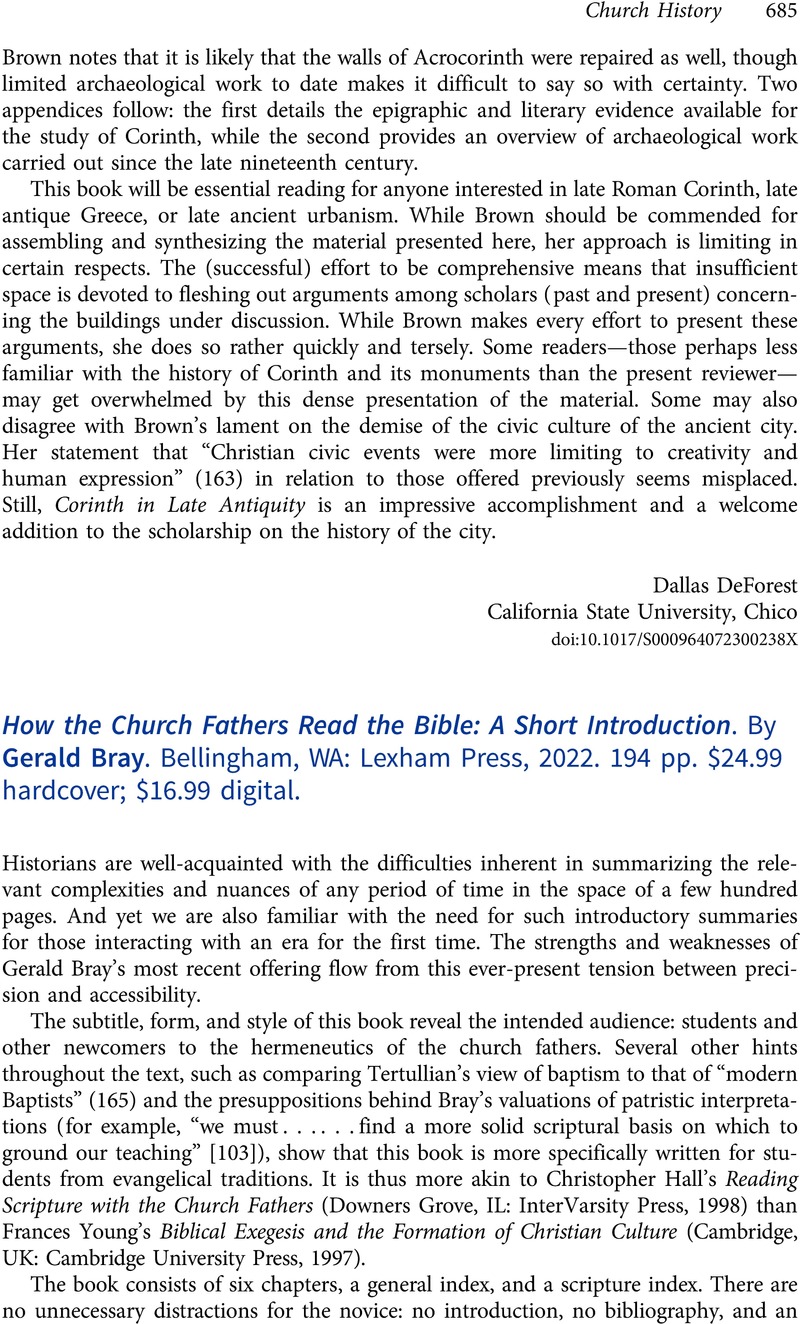No CrossRef data available.
Article contents
How the Church Fathers Read the Bible: A Short Introduction. By Gerald Bray. Bellingham, WA: Lexham Press, 2022. 194 pp. $24.99 hardcover; $16.99 digital.
Review products
How the Church Fathers Read the Bible: A Short Introduction. By Gerald Bray. Bellingham, WA: Lexham Press, 2022. 194 pp. $24.99 hardcover; $16.99 digital.
Published online by Cambridge University Press: 11 December 2023
Abstract
An abstract is not available for this content so a preview has been provided. Please use the Get access link above for information on how to access this content.

- Type
- Book Reviews and Notes
- Information
- Copyright
- Copyright © The Author(s), 2023. Published by Cambridge University Press on behalf of American Society of Church History


